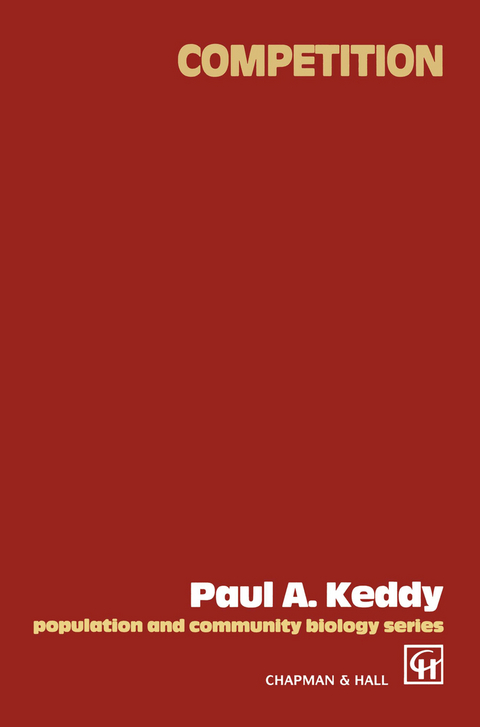
Competition
Chapman and Hall (Verlag)
978-0-412-31360-8 (ISBN)
1 Studying competition.- 1.1 A definition of competition.- 1.2 Other views on the definition of competition.- 1.3 Kinds of resources.- 1.4 Kinds of competition.- 1.5 Competitive dominance.- 1.6 Back to basics.- 1.7 Questions for discussion.- 2 Competition in action.- 2.1 Competition and thermodynamics: basic principles.- 2.2 Case studies of intraspecific competition.- 2.3 Case studies of interspecific competition.- 2.4 Literature review of case studies.- 2.5 The current situation.- 2.6 Questions for discussion.- 3 Modelling of competition.- 3.1 Kinds of models.- 3.2 The Lotka-Volterra models.- 3.3 A resource competition model.- 3.4 Competition, behaviour and habitat use.- 3.5 Two graphical models for resource partitioning.- 3.6 Conclusion.- 3.7 Questions for discussion.- 4 Choosing the tools.- 4.1 Descriptive, comparative and experimental studies.- 4.2 Descriptive studies.- 4.3 Comparative studies.- 4.4 Experimental studies.- 4.5 Choosing a research path.- 4.6 Questions for discussion.- 5 Extending the generality of field experiments.- 5.1 Criticisms regarding lack of generality.- 5.2 Demonstrating generality of pattern.- 5.3 Using increased numbers of species.- 5.4 Providing a comparative context.- 5.5 Using general experimental factors.- 5.6 Arrangement along gradients.- 5.7 Conclusion.- 5.8 Questions for discussion.- 6 Community matrices and competitive hierarchies.- 6.1 Patterns in community matrices.- 6.2 Two examples of communities with competitive hierarchies.- 6.3 Future directions.- 6.4 Conclusion.- 6.5 Questions for discussion.- 7 Competition, empiricism and comparison.- 7.1 Constraints on competition in plant communities.- 7.2 Constraints on competition in animal communities.- 7.3 Comparison of insect and plant communities.- 7.4 Making theories operational for hypothesis testing.- 7.5 Resource partitioning revisited.- 7.6 Towards general principles.- 7.7 Questions for discussion.- 8 The path to competition theory.- 8.1 Goals for competition theory.- 8.2 Brains and their limitations.- 8.3 Choosing a question.- 8.4 Choosing appropriate model systems.- 8.5 Selecting a conceptual approach.- 8.6 Obstacles to communication.- 8.7 Conclusion.- 8.8 Questions for discussion.- References.
| Erscheint lt. Verlag | 31.5.1989 |
|---|---|
| Reihe/Serie | Population and Community Biology Series ; 6 |
| Zusatzinfo | 3 Illustrations, black and white; 224 p. 3 illus. |
| Verlagsort | London |
| Sprache | englisch |
| Maße | 155 x 235 mm |
| Themenwelt | Naturwissenschaften ► Biologie ► Evolution |
| Naturwissenschaften ► Biologie ► Ökologie / Naturschutz | |
| ISBN-10 | 0-412-31360-X / 041231360X |
| ISBN-13 | 978-0-412-31360-8 / 9780412313608 |
| Zustand | Neuware |
| Haben Sie eine Frage zum Produkt? |
aus dem Bereich


